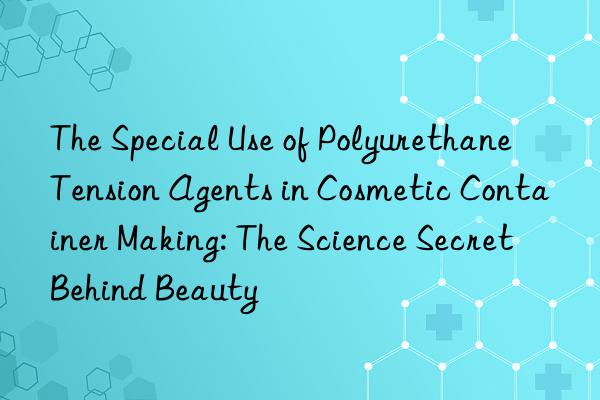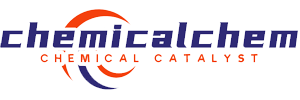
Special use of polyurethane tension agents in cosmetic container production: the scientific secret behind beauty
Introduction
Hello everyone! Today we are going to talk about a topic that seems ordinary but full of technology - the special use of polyurethane tension agents in the production of cosmetic containers. You might ask, what is polyurethane tensioner? What does it have to do with cosmetic containers? Don’t worry, next I will use easy-to-understand language to reveal the scientific secrets behind this beauty.
What is polyurethane tensile agent?
First, let's get to know the polyurethane tensile agent. Polyurethane (PU) is a polymer material with excellent elasticity, wear resistance and chemical resistance. Polyurethane tensile agent, as the name suggests, is an additive that can enhance the tensile properties of materials. It is widely used in various industrial fields, including automobiles, construction, electronics, etc. But in the production of cosmetic containers, its function is particularly special.
Special requirements for cosmetic containers
Cosmetic containers are not just "boxes" used to hold products, they also need to have multiple functions:
- Aesthetics: Cosmetic containers are part of the brand image and should be fashionable and attractive.
- Sealability: Prevent product leakage or contamination.
- Durability: Able to withstand various physical and chemical challenges in daily use.
- Environmentality: Meet the requirements of modern consumers for sustainable development.
These requirements make material selection for cosmetic containers particularly important. It is in this context that polyurethane tensioning agent plays its unique role.
Application of polyurethane tension agent in cosmetic containers
1. Reinforcement of elasticity of materials
Cosmetic containers are often subjected to physical effects such as extrusion and stretching during use. If the material is not elastic enough, the container is prone to deformation or even cracking. Polyurethane tension agents can significantly improve the elasticity of the material, allowing it to quickly return to its original state after being subjected to stress.
Example of product parameters:
| parameter name | Value Range | Instructions |
|---|---|---|
| Elastic Modulus | 10-100 MPa | Elasticity of material when subjected to stress |
| StretchStrength | 20-50 MPa | The material's high tolerance for stretching |
| Elongation of Break | 200-500% | The elongation ratio of the material before breaking |
2. Improve wear resistance
Cosmetic containers are inevitably rubbed with other items during daily use. Polyurethane tensile agents can enhance the wear resistance of the material and extend the service life of the container.
Example of product parameters:
| parameter name | Value Range | Instructions |
|---|---|---|
| Abrasion resistance coefficient | 0.1-0.5 | The degree of loss of material in friction |
| Surface hardness | 60-90 Shore A | Hardness level of material surface |
3. Improve sealing
The sealing properties of cosmetics are directly related to the shelf life and effectiveness of the product. Polyurethane tension agents can improve the sealing performance of materials and prevent product leakage or external contamination.
Example of product parameters:
| parameter name | Value Range | Instructions |
|---|---|---|
| Sealing Pressure | 0.5-2.0 MPa | The pressure of the material when sealing |
| Permeability | 0.01-0.1 g/m²·h | Permeability of material to gas or liquid |
4. Environmental performance
Modern consumers are paying more and more attention to the environmental protection of their products. Polyurethane tensile agents can not only improve the performance of the material, but also reduce environmental pollution during the production process.
Example of product parameters:
| parameter name | Value Range | Instructions |
|---|---|---|
| Degradability | 50-90% | Proportion of material degradation in natural environment |
| VOC emissions | <50 ppm | Volatile organic compound emissions of materials during production |
Scientific Principles of Polyurethane Tension Agent
1. Molecular structure
The molecular structure of polyurethane tension agents contains a large number of urethane groups (-NH-CO-O-), which can form hydrogen bonds, enhance the interaction force between molecules, thereby improving the elasticity and wear resistance of the material.
2. Crosslinking reaction
In the process of material processing, the polyurethane tension agent can form a three-dimensional network structure through cross-linking reaction. This structure not only improves the mechanical properties of the material, but also enhances its chemical and heat resistance.
3. Interface compatibility
Polyurethane tensile agent can have good interface compatibility with a variety of substrates (such as plastics, rubbers, etc.), which makes it more widely used in composite materials.
Practical Application Cases
1. High-end cosmetic bottles
A well-known cosmetics brand uses plastic bottles containing polyurethane tension agent in its high-end series of products. This bottle not only has a stylish appearance, but also has excellent elasticity and wear resistance, which is very popular among consumers.
2. Environmentally friendly packaging
Another cosmetics company launched an environmentally friendly packaging series using a biodegradable polyurethane tensor. This packaging not only meets environmental protection requirements, but also has good sealing and durability.
3. Multifunctional container
A innovative brand has developed a multifunctional cosmetic container using polyurethane tension agent-enhanced composite material. This container not only can withstand a variety of physical effects, but also has excellent chemical resistance and is suitable for the use of a variety of cosmetics.
Future development trends
With the advancement of technology and the continuous changes in consumer demand, the application of polyurethane tension agents in the production of cosmetic containers will also continue to expand. In the future, we may see more cosmetic containers with smart features, environmental performance and personalized design.
1. Smart container
Future cosmetic containers may integrate smart sensors that can monitor product usage and environmental conditions in real time. Polyurethane tensioning agents will play an important role in this regard, ensuring the durability and sealing of the container.
2. Personalized design
With the development of 3D printing technology, the design of cosmetic containersThe plan will be more personalized. Polyurethane tensile agents can provide more design freedom to meet consumers' needs for unique appearance.
3. Sustainable Development
Environmental protection and sustainable development will become important trends in cosmetic containers in the future. The degradability and low VOC emission characteristics of polyurethane tensile agents will make them have broad application prospects in this field.
Conclusion
Through today's popular science lecture, we learned about the special uses of polyurethane tension agents in the production of cosmetic containers. It not only improves the elasticity, wear resistance and sealing of the container, but also meets the requirements of modern consumers for environmental protection and sustainable development. I hope this article will give you a deeper understanding of the scientific secrets behind cosmetics, and I also look forward to seeing more innovative cosmetic container designs in the future.
Thank you for listening! If you have any questions or ideas, please leave a message in the comment section to discuss. See you next time!
Extended reading:https://www.newtopchem.com/archives/44583
Extended reading:https://www.bdmaee.net/metal-catalyst/
Extended reading:<a href="https://www.bdmaee.net/metal-catalyst/
Extended reading:https://www.cyclohexylamine.net/main-6/
Extended reading:https://www.bdmaee.net/dabco-dmdee-catalyst-cas110-18-9-evonik-germany/
Extended reading:https://www.bdmaee.net/fomrez-ul-1-strong-gel-catalyst-momentive/
Extended reading:https://www.morpholine.org/delayed-catalyst-for-foaming-dabco-dc2-polyurethane-catalyst-dabco-dc2/
Extended reading:https://www.bdmaee.net/catalyst-8154/
Extended reading:https://www.bdmaee.net/nt-cat-pc9-catalyst-cas33329-35-6-newtopchem/
Extended reading:https://www.newtopchem.com/archives/44402
Extended reading:https://www.bdmaee.net/wp-content/uploads/2022/08/-37-low-odor-polyurethane-rigid-foam-catalyst-polyurethane-rigid-foam-catalyst.pdf

 微信扫一扫打赏
微信扫一扫打赏

